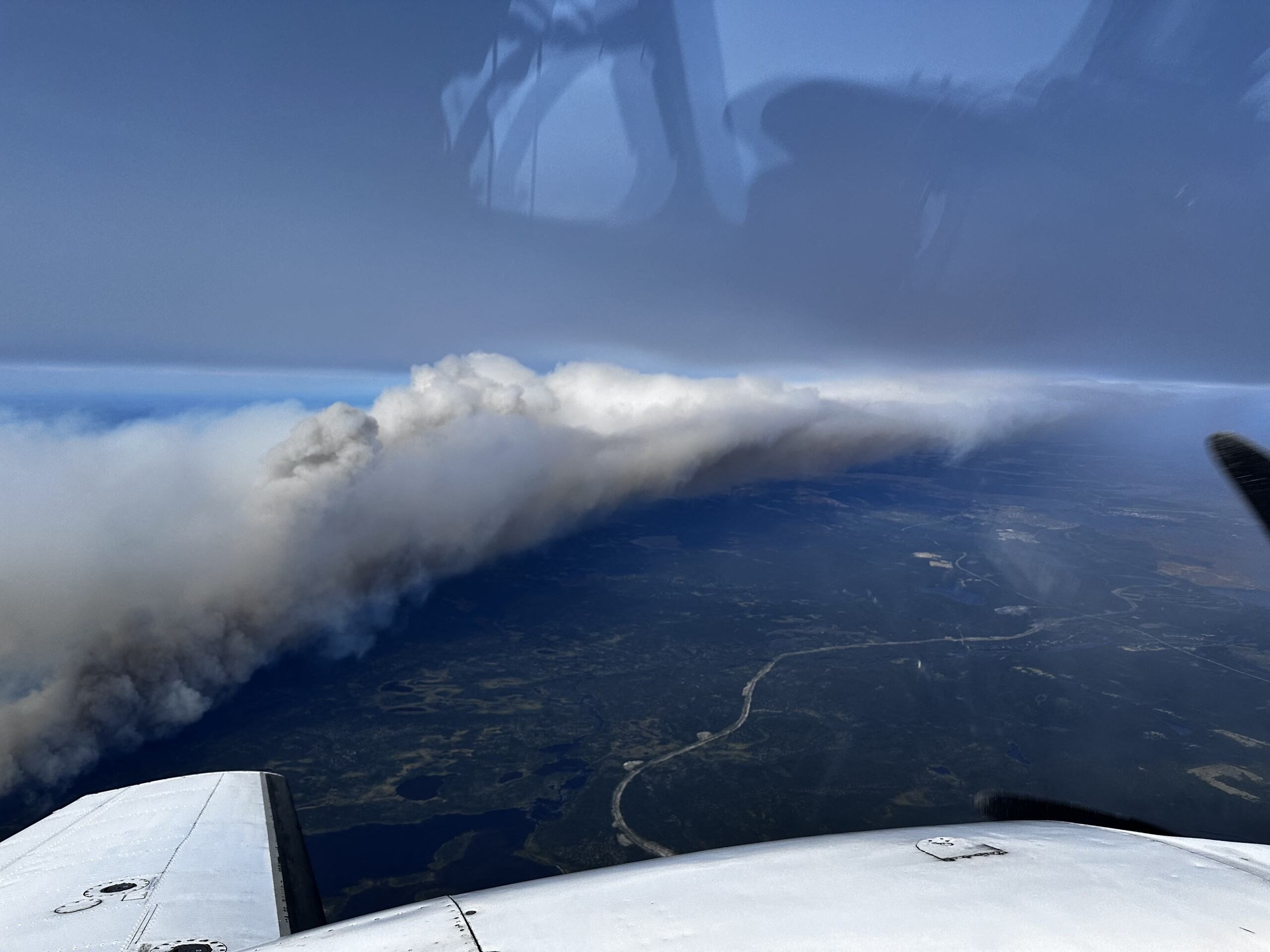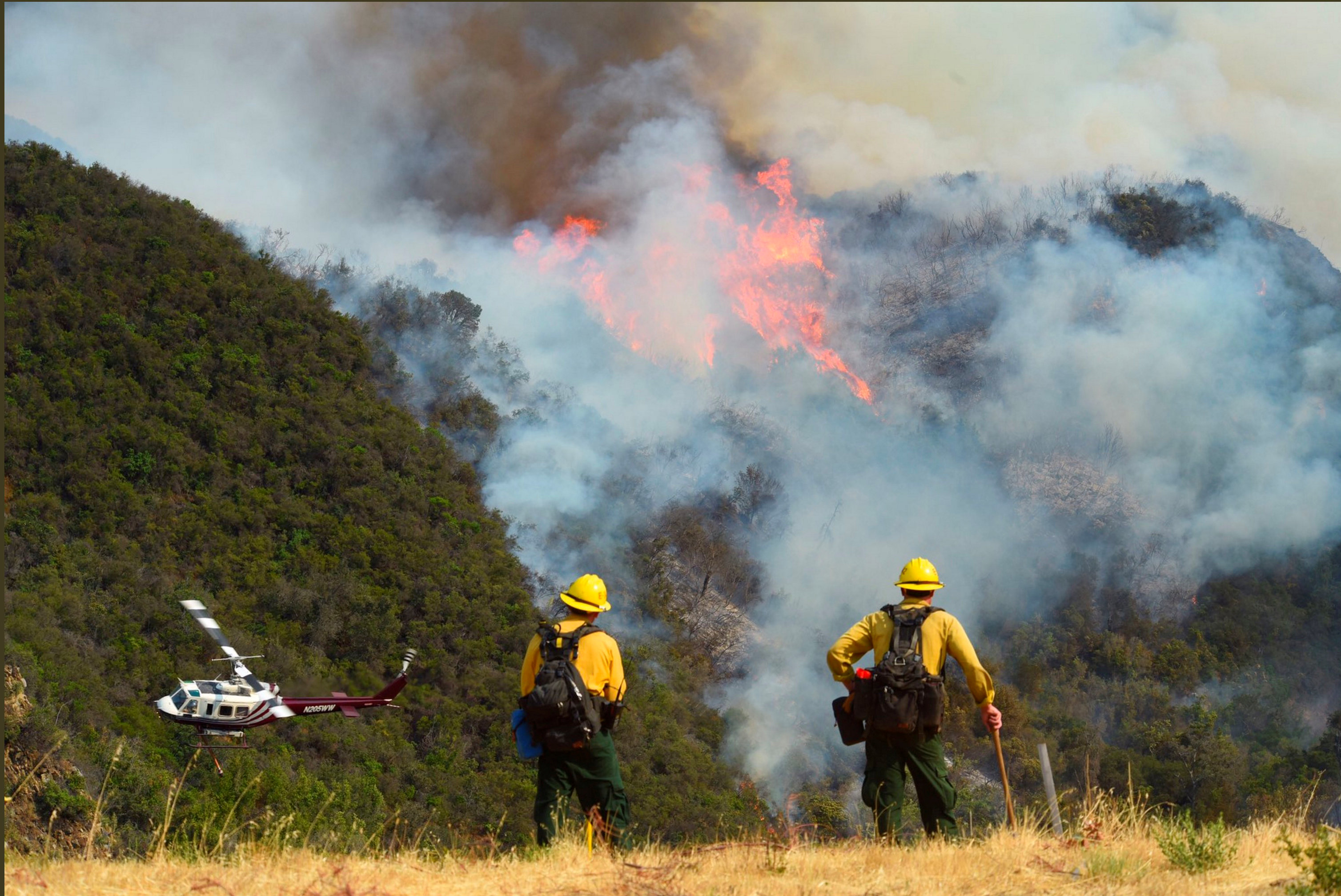Alberta Wildfires: A Looming Threat To Oil Production

Table of Contents
Direct Impacts of Wildfires on Oil Sands Operations
Wildfires in Alberta directly impact oil sands operations in several devastating ways. The immediate and long-term consequences can be substantial, affecting both production and the safety of workers.
Evacuations and Operational Shutdowns
Wildfires necessitate immediate evacuations and operational shutdowns of oil sands facilities. This leads to significant production losses and costly delays.
- Example 1: The 2016 Fort McMurray wildfire forced the evacuation of nearly 90,000 people and caused a temporary shutdown of numerous oil sands operations, resulting in millions of barrels of lost production.
- Example 2: Smaller, localized wildfires can still cause significant disruptions, leading to temporary shutdowns lasting days or even weeks, impacting thousands of workers.
- Evacuations require meticulous planning and coordination, involving the safe relocation of personnel, securing sensitive equipment, and implementing comprehensive safety protocols. The logistical challenges are immense, adding to the overall economic burden.
Damage to Infrastructure
Wildfires can inflict considerable damage on critical oil sands infrastructure, including pipelines, processing plants, power lines, and well sites.
- Vulnerable Infrastructure: Pipelines are particularly vulnerable to damage from intense heat and fire, leading to spills, leaks, and significant repair costs. Power lines, crucial for operations, are also at risk.
- Repair Costs: Repairing or replacing damaged infrastructure can be incredibly expensive, running into millions or even billions of dollars, depending on the scale of the damage. This cost is often passed on to consumers.
- Cascading Effects: Damage to infrastructure can trigger a cascade of disruptions, impacting the entire supply chain and delaying the return to full production for extended periods.
Air Quality and Worker Safety
Wildfire smoke significantly impacts air quality, posing serious health risks to workers in the oil sands.
- Respiratory Issues: Workers are exposed to harmful pollutants, leading to respiratory problems, eye irritation, and other health concerns.
- Reduced Visibility: Smoke significantly reduces visibility, hindering operations and creating unsafe working conditions.
- Safety Precautions: Companies must implement costly safety precautions, such as providing respirators and limiting work during periods of poor air quality. Failure to prioritize worker safety can lead to legal repercussions and reputational damage.
Indirect Impacts on Oil Production and Supply Chains
The impact of Alberta wildfires extends far beyond the immediate vicinity of oil sands operations. Indirect effects ripple through the supply chain, impacting global energy markets and investor confidence.
Transportation Disruptions
Wildfires frequently disrupt road and rail transportation networks, hindering the movement of oil and essential materials.
- Affected Routes: Major highways and rail lines serving the oil sands are often affected by closures due to wildfires, causing significant delays.
- Increased Costs: Transportation delays translate into increased costs for producers, potentially impacting the price of oil and its derivatives.
- Just-in-Time Delivery: Wildfires can severely disrupt just-in-time delivery systems, leading to production slowdowns and operational inefficiencies.
Impact on Energy Prices
Supply disruptions caused by Alberta wildfires can significantly impact global energy prices, creating volatility in the market.
- Price Spikes: Historical data shows that major supply disruptions due to natural disasters, including wildfires, often lead to sharp increases in oil prices.
- Influencing Factors: The severity and duration of the wildfire, along with the extent of the damage to infrastructure, all influence the magnitude of price fluctuations.
- Economic Consequences: Price volatility negatively impacts both producers and consumers, creating uncertainty and economic hardship.
Investor Confidence and Future Investments
The risk of wildfires significantly impacts investor confidence in the Alberta oil sands sector.
- Decreased Investment: The potential for production disruptions and damage to assets makes investors hesitant to commit to new projects in the region.
- Risk Assessments: Insurance premiums increase, reflecting the heightened risk associated with wildfires, adding to the financial burden on oil companies.
- Long-Term Implications: Persistent wildfire threats could hamper the long-term growth and sustainability of the Alberta oil sands industry.
Mitigation and Prevention Strategies
Addressing the threat of Alberta wildfires to oil production requires a multi-faceted approach focusing on prevention, detection, and adaptation.
Improved Fire Detection and Response
Advancements in technology and improved collaboration are crucial for early wildfire detection and rapid response.
- Advanced Technology: Utilizing satellites, drones, and sophisticated sensor networks can significantly improve early detection capabilities.
- Improved Communication: Efficient communication systems ensure timely alerts and coordinated responses from government agencies, oil companies, and emergency services.
- Collaboration: Strong collaboration between stakeholders is crucial for effective wildfire management and a swift response to incidents.
Forest Management Practices
Proactive forest management practices can significantly reduce wildfire risk.
- Controlled Burns: Controlled burns help remove excess fuel from forests, minimizing the intensity and spread of wildfires.
- Forest Thinning: Strategic thinning reduces the density of trees, creating more space between vegetation and limiting the spread of fire.
- Firebreaks: Creating firebreaks—wide strips of cleared land—can act as barriers to prevent wildfires from spreading.
Climate Change Adaptation
Climate change is exacerbating wildfire risk, making adaptation strategies increasingly crucial.
- Climate-Resilient Infrastructure: Investing in infrastructure designed to withstand extreme weather events, including wildfires, is vital.
- Drought-Resistant Vegetation: Planting drought-resistant vegetation can reduce the risk of wildfires by reducing the amount of flammable material.
- Greenhouse Gas Emissions: Reducing greenhouse gas emissions is crucial for mitigating the long-term impact of climate change on wildfire frequency and intensity.
Conclusion
Alberta wildfires pose a significant and multifaceted threat to oil production, with direct impacts on operations and indirect effects on global energy markets and investor confidence. The economic and environmental consequences of these events are substantial, demanding proactive mitigation and prevention strategies. Understanding the risks and implementing effective solutions are crucial for the long-term sustainability of Alberta's oil sands industry. To learn more about wildfire prevention and mitigation strategies relevant to Alberta's oil industry, engage with organizations such as the Alberta Energy Regulator and Alberta Wildfire. Staying informed is critical in addressing this growing threat to Alberta's oil production.

Featured Posts
-
 Six Definitive Rules For Polished Office Lunch Etiquette
May 31, 2025
Six Definitive Rules For Polished Office Lunch Etiquette
May 31, 2025 -
 Manitoba Wildfires Crews Fight Deadly Blazes
May 31, 2025
Manitoba Wildfires Crews Fight Deadly Blazes
May 31, 2025 -
 Supercross Returns To Salt Lake City Dates Tickets And What To Expect
May 31, 2025
Supercross Returns To Salt Lake City Dates Tickets And What To Expect
May 31, 2025 -
 Wang Sun Dominate Mixed Doubles At Table Tennis World Championships Again
May 31, 2025
Wang Sun Dominate Mixed Doubles At Table Tennis World Championships Again
May 31, 2025 -
 The Good Life Practical Strategies For A Fulfilling Existence
May 31, 2025
The Good Life Practical Strategies For A Fulfilling Existence
May 31, 2025
